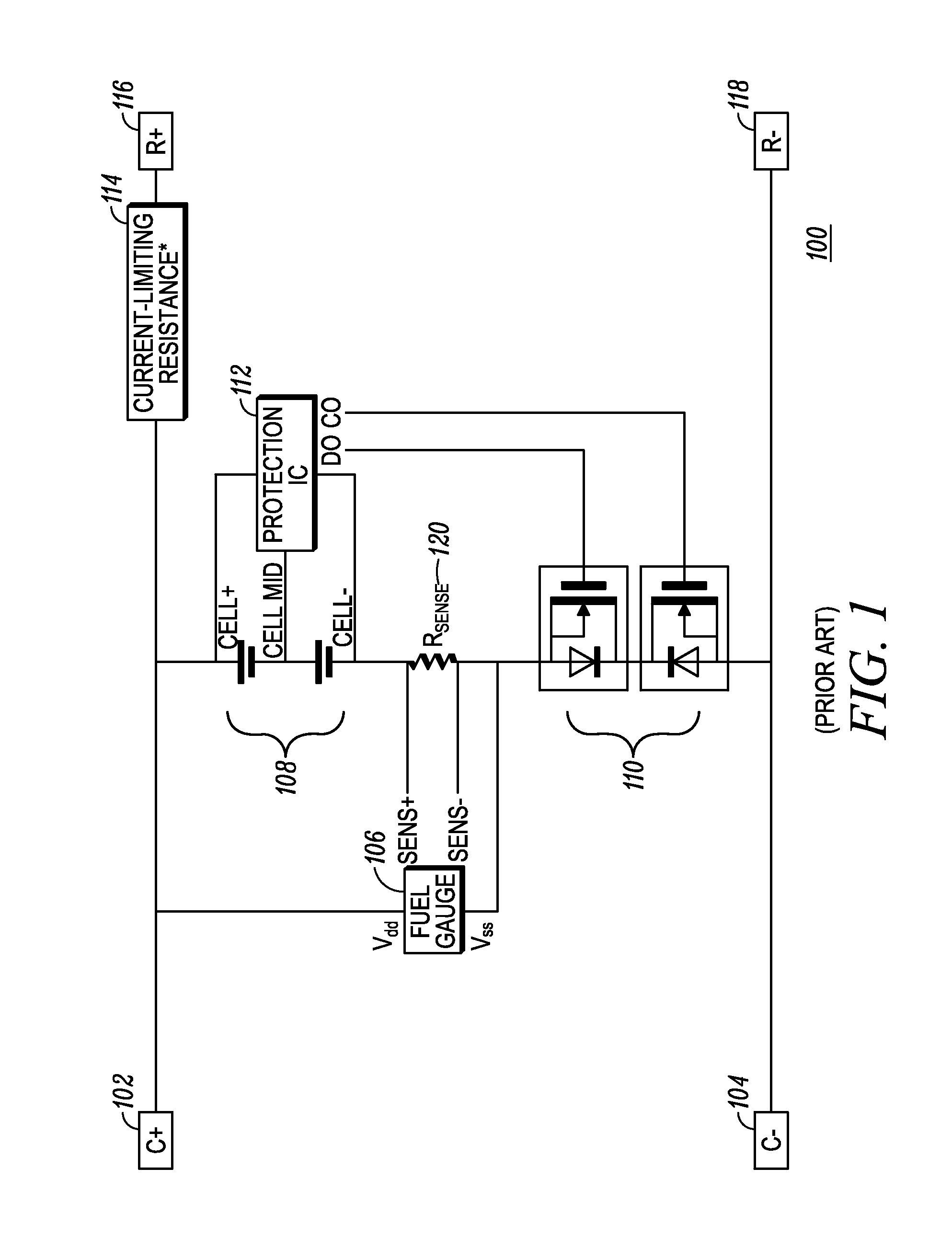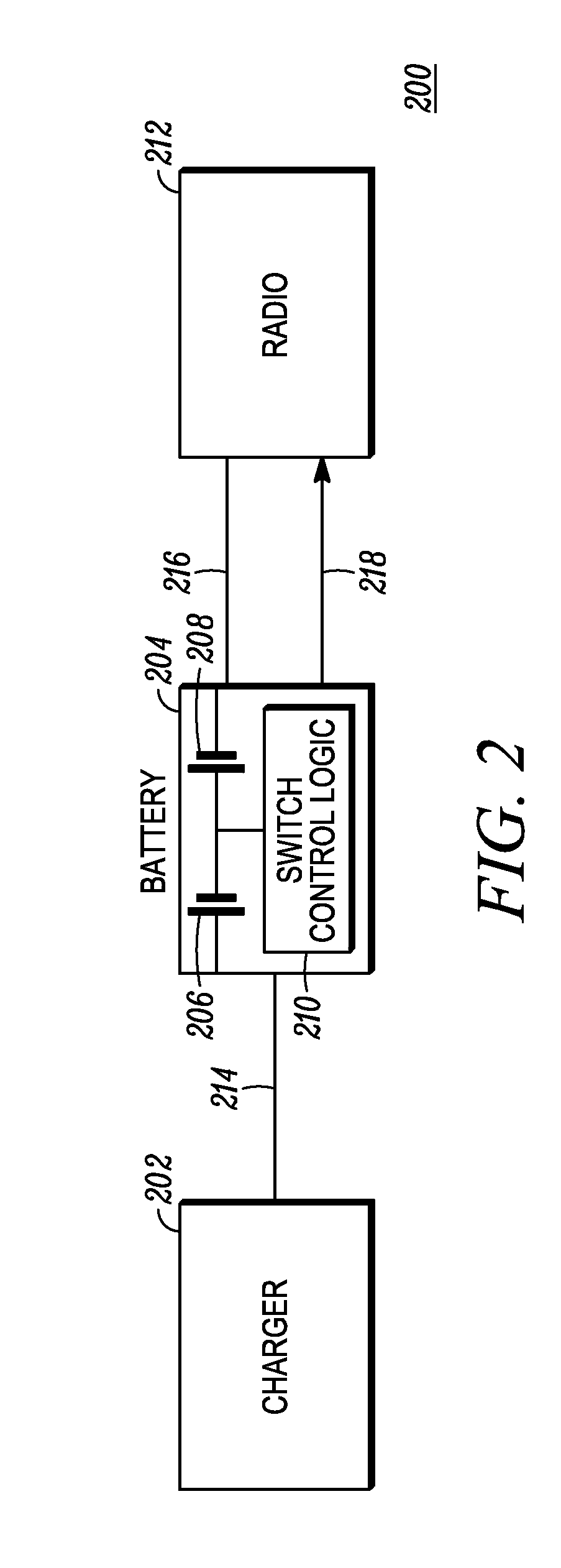Method and apparatus for adapting a battery voltage
a battery voltage and voltage adapter technology, applied in the direction of secondary cell service/maintenance, parallel/serial switching, battery/cell propulsion, etc., can solve the problems of affecting the voltage model of the battery cell, unable to efficiently utilize the capacity provided by newer rechargeable battery cells, and unable to efficiently utilize the higher voltage of newer-technology cells
- Summary
- Abstract
- Description
- Claims
- Application Information
AI Technical Summary
Benefits of technology
Problems solved by technology
Method used
Image
Examples
Embodiment Construction
[0024]Briefly, there is described herein, a method and apparatus for adapting battery cells via switch control logic which enables series / parallel cell switching decisions based on non-complex detection of voltage and charging / discharging status, independent of an attached load or charger. A comparator-type switch control eliminates the need for complex embedded processors, bus controls, or analog-to-digital converters. By selectively switching the battery cells into series or parallel cell configuration, a host device is now able to fully discharge the battery cells, thereby capitalizing on the full available capacity of those battery cells. Since the switch from parallel to series cell configuration doubles the voltage available to the host device, load current is effectively halved, while maintaining equivalent power to the host device. With lower current associated with the higher voltage, voltage drops across pathway resistances are minimized, enabling host devices to consume e...
PUM
 Login to View More
Login to View More Abstract
Description
Claims
Application Information
 Login to View More
Login to View More - R&D
- Intellectual Property
- Life Sciences
- Materials
- Tech Scout
- Unparalleled Data Quality
- Higher Quality Content
- 60% Fewer Hallucinations
Browse by: Latest US Patents, China's latest patents, Technical Efficacy Thesaurus, Application Domain, Technology Topic, Popular Technical Reports.
© 2025 PatSnap. All rights reserved.Legal|Privacy policy|Modern Slavery Act Transparency Statement|Sitemap|About US| Contact US: help@patsnap.com



